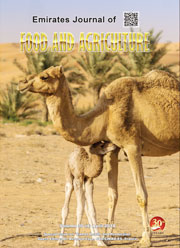CITRULLUS COLOCYNTHIS (L.) SCHRAD. (COLOCYNTH): BIOTECHNOLOGICAL PERSPECTIVES
DOI:
https://doi.org/10.9755/ejfa.2016-11-1764Keywords:
abiotic stress-resistance, colocynth, Cucurbitaceae, medicinal properties, plant growth regulators, tissue cultureAbstract
Citrullus colocynthis (L.) Schrad. is commonly known as colocynth. The fruit pulp of colocynth has medicinal properties while the seeds have nutritive qualities. C. colosynthis is resistant to high temperatures and grows in the desert regions of North Africa, the Middle East and Western Asia. C. colocynthis likely carries genes of interest that could be explored for inducing abiotic stress resistance in transgenic plants. Although the tissue culture and molecular biology of this species have been explored, the latter has been primarily used to resolve taxonomic relationships with other members of the Citrullus genus and curcubits. Genetic mining of the plant is scarce while genetic transformation protocols are also rare. The aim of the present review is to present a brief overview of the biotechnological perspectives of C. colocynthis.










 .
. 